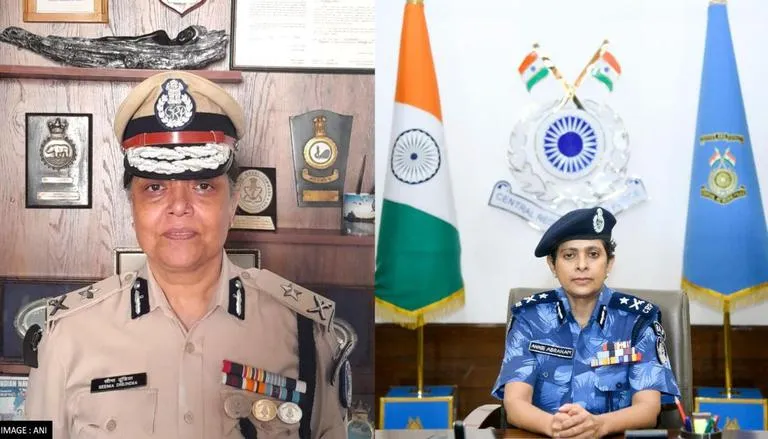The Central Reserve Police Force (CRPF) was established on July 27, 1939, as the Crown Representative’s Police. On December 28, 1949, the CRPF Act was passed, transforming it into the Central Reserve Police Force. It belongs to the group of Central Armed Police Forces. The primary responsibility of the CRPF is to support state and union territory police forces with consistent efforts to uphold the rule of law and check on the insurgency. Roughly 81 years after its establishment for the first time in its history, two CRPF women officers promoted to IG rank (Inspector Generals), 35 years after the first time women joined CRPF as officers in 1987. The appointment of women officers as IG has been made in the specialised anti-riots unit Rapid Action Force (RAF) and the Bihar Sector.
Previously, there have been female Indian Police Service (IPS) officers in charge of CRPF formations, and currently, the force has at least three such officials. According to officials, Annie Abraham has been designated as the IG of the Rapid Action Force (RAF), and Seema Dhundia has been placed as the IG of the Bihar Sector as part of a recent transfer order issued by the force headquarters. This is the first time a woman IG will be in charge of the RAF. The CRPF’s sectoral leader is an IG.
It is interesting to note that these officers were among the highly decorated officers and the first female officers to join CRPF in 1987. They have also led an all-woman Indian police contingent at the UN.
The 15-battalion RAF is called upon to support state police forces for significant events where large crowds are anticipated and for VIP visits. It is deployed for anti-riot, counter-protest, and in a situation where sensitive law and order duties are to be taken care of in various parts of the country. In 1986, the CRPF became the first branch of the Central Armed Police Force (CAPF) to enlist women for warfare. At present, there are more than 6,000 female constables working in six of these battalions.
This news arrived when the UN Security Council commemorated the adoption of the UN Security Council Resolution 1325, the first in a series of 10 resolutions since 2000. This resolution focuses on important places women must occupy during peace and security dialogues and policy-making efforts. The premise of the passing of the resolution has been a recognition that women and children are affected disproportionately in conflict situations. The efforts towards peacebuilding and peacekeeping are half-hearted until women are put at the centre of these dialogues. This is more popularly known as the Women, Peace and Security agenda (WPS agenda).
CRPF Women Officers Promoted to IG Rank is not the end….
India has a long list of efforts to boast about the participation of women in peace and security even though it has not ratified 1325 and has in official statements mentioned that it has no intention of taking this ahead, too, something that has been debated and questioned for a long time.
The long list of positive efforts towards women’s participation in peace and security from India’s side has been in the direction of WPS despite the non-ratification of the international policy document until now. Some of these are – the increased number of uniformed women in peacekeeping missions. According to the data available from the UN, of around 95,000 peacekeepers in 2020, women comprised 4.8% of military contingents and 10.9% of formed police units. Meanwhile, approximately 34% of personnel in peacekeeping missions were women. It does not bifurcate the number of women from each nation deployed in these peacekeeping missions. The recognition of India’s efforts towards the importance of women’s participation in peacebuilding networks is evident.
India was the first nation to send an all-female troop on a UN peacekeeping operation in 2007. In order to strengthen the capabilities of the Liberian police, the Formed Police Unit was deployed throughout Liberia for round-the-clock security and carried out night patrols in the nation’s capital, Monrovia.
When UNSCR 2242 was adopted in 2015, Indian officials emphasised their nation’s role as a troop-contributing nation, reaffirmed the importance of UNSCR 1325, and pledged to effectively implement the Women, Peace and Security agenda. The first all-female peacekeeping team that India sent to Liberia in 2007 has been hailed as a success by the international community.
India continued to be the most significant cumulative contributor of UN Peacekeeping troops, having provided around 2,53,000 since the 1950s. As of October 31 2020, India is the fifth-largest contributor, with 5,353 personnel deployed in 8 peacekeeping missions. India made deployments of medical personnel to Goma (DRC) and Juba (South Sudan).

